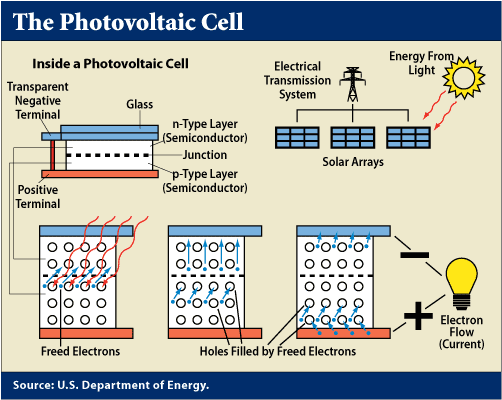Photovoltaic Basics
The term photovoltaics was first used in about 1890, the word has two parts: photo, derived from the Greek word for light, and volt, relating to electricity pioneer Alessandro Volta. So, photovoltaics could literally be translated as light-electricity. And that’s what photovoltaic (PV) materials and devices do — they convert light energy into electrical energy (Photoelectric Effect), as French physicist Edmond Becquerel discovered as early as 1839.

The photoelectric effect is the basic physical process by which a PV cell converts sunlight into electricity. When light shines on a PV cell, it may be reflected, absorbed, or pass right through. But only the absorbed light generates electricity.
The energy of the absorbed light is transferred to electrons in the atoms of the PV cell. With their newfound energy, these electrons escape from their normal positions in the atoms of the semiconductor PV material and become part of the electrical flow, or current, in an electrical circuit. A special electrical property of the PV cell—what we call a “built-in electric field”—provides the force, or voltage, needed to drive the current through an external “load,” such as a light bulb.
The size of an array depends on several factors, such as the amount of sunlight available in a particular location and the needs of the consumer. The modules of the array make up the major part of a PV system, which can also include electrical connections, mounting hardware, power-conditioning equipment, and batteries that store solar energy for use when the sun isn’t shining.
(excerpted from ‘How a Photovoltaic Cell Works‘)
More about photovoltaics:
